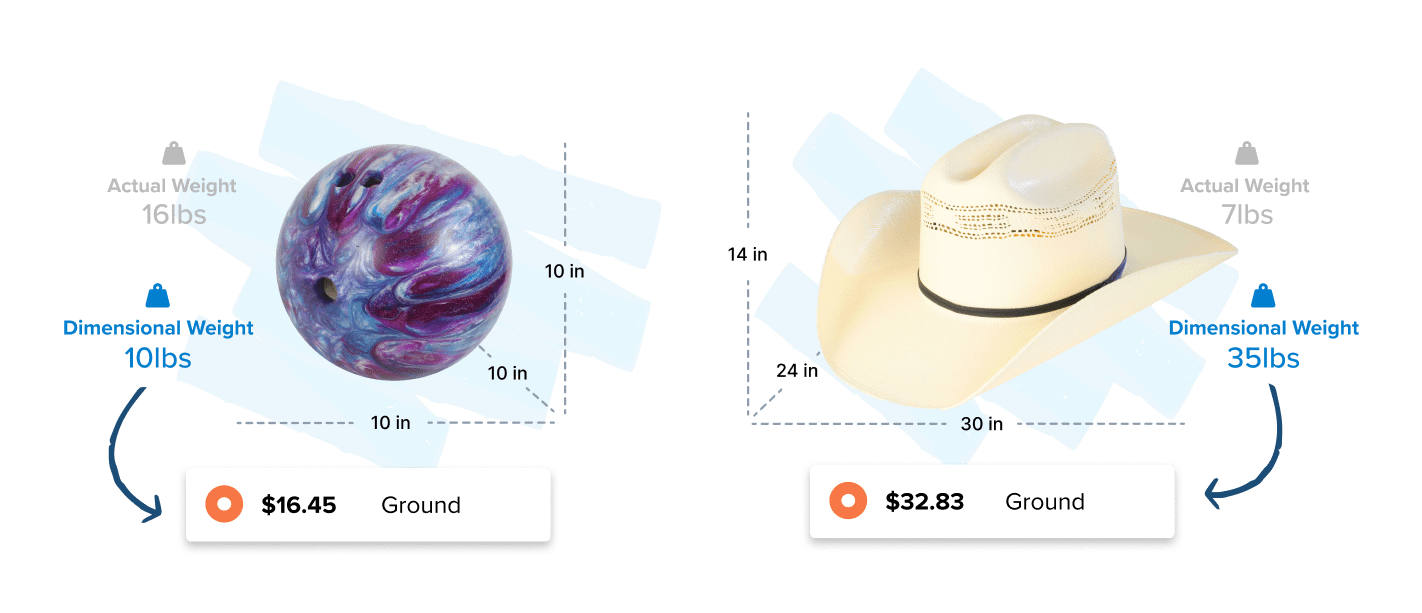Dimensional weight or DIM weight plays a critical role in determining shipping costs. Unlike traditional weight-based pricing, DIM weight considers the space a package occupies in a carrier’s vehicle. This approach also prioritizes efficiency, ensuring packages don’t take up unnecessary room.
While this method helps carriers maximize profitability, it can lead to unexpectedly high shipping costs for retailers using oversized or inefficient packaging. Simultaneously, the rise of eco-conscious consumers has placed sustainability at the forefront of eCommerce operations. For retailers, optimizing DIM or Dimensional weight and adopting sustainable packaging practices are now essential strategies for reducing costs and minimizing environmental impact.
This guide will help you accurately calculate DIM weight, avoid common pitfalls, and embrace sustainable packaging strategies to enhance both your bottom line and your brand image.
What is DIM or Dimensional Weight and Why Does It Matter?
Determining dimensional weight ensures shipping costs reflect both the weight and the space a package occupies. The formula is very simple.
DIM Weight = (Length × Width × Height) ÷ Dimensional Factor
- The dimensional factor—typically 139 or 166—varies by carrier (e.g., FedEx, UPS).
- If the DIM weight exceeds the actual weight, you’ll be charged based on the DIM weight instead.
How to Determine Dimensional Weight: Example Table
| Package Dimensions (LxWxH) | Actual Weight (lbs) | Dimensional Weight (lbs) | Chargeable Weight (lbs) |
|---|---|---|---|
| 10″ x 10″ x 10″ | 4 | 5.6 | 5.6 |
| 18″ x 14″ x 10″ | 9 | 14.4 | 14.4 |
| 12″ x 10″ x 6″ | 6 | 3.0 | 6 |
This table shows the comparison between actual weight and dimensional weight for example scenarios. The chargeable weight is always the higher value between the two. For example, in Row 1, the chargeable weight is 5.6 lbs due to the dimensional weight being higher.

Quick Tip: Check your carrier’s dimensional factor and also ensure packaging is optimized to avoid inflated shipping charges.
Role of Packaging in Determining Dimensional Weight of Shipments
Packaging choices are the linchpin in managing dimensional weight. Every inch of unnecessary packaging adds to the dim weight, increasing costs and environmental impact. Avoid these common errors to reduce unnecessary shipping costs.
- Oversized boxes: Using boxes significantly larger than the product wastes space and raises DIM weight.
- Excess fillers: Air pillows or bubble wrap often increase package size and shipping costs unnecessarily. At times you might be paying just to ship air!
- One-size-fits-all approach: Standardized box sizes may not suit all products, leading to inefficiencies.
Sustainable Packaging Strategies to Optimize DIM Weight
Adopting sustainable packaging benefits both your business and the planet. Here’s how to get started:
1. Choosing the Right Packaging Size
- Use custom-fit boxes to minimize void space. Brands like Warby Parker have pioneered this approach, using boxes specifically designed for their eyeglasses to cut shipping costs and waste.
- Invest in automated box-sizing technology to create boxes tailored to each product.
2. Select Eco-Friendly Materials
- Opt for biodegradable or recycled materials to reduce environmental impact.
- Replace traditional fillers with sustainable alternatives like compostable packing peanuts.
3. Innovative Packaging Designs
Cutting-edge designs are reshaping packaging:
- Foldable boxes: Ideal for returns or bulk shipping.
- Shipping pouches: Perfect for small, lightweight items.
- Nestable packaging: Products like nesting bowls or modular containers save space.
Benefits of Optimizing Dimensional Weight While Shipping
The shift toward sustainable packaging delivers far-reaching benefits.
Cost Savings
- Efficient packaging reduces dim weight charges, translating into lower shipping costs.
- Minimizing void space reduces material usage, cutting supply costs.
Enhanced Brand Perception
- Consumers increasingly value eco-friendly businesses. Highlighting your sustainability efforts can improve customer loyalty and attract more customers.
- Sustainable practices often lead to positive media coverage, strengthening your brand’s reputation.
Environmental Impact
- Reduced packaging waste and optimized shipping methods lower carbon emissions.
- Contributing to global sustainability efforts positions your business as an industry leader.
By adopting these practices, you’re saving money and additionally contributing to a more sustainable future.
Building a Sustainable Future with Optimized Packing
The challenges of dimensional weight are clear. However, they also give you a chance to rethink your packaging strategies. By prioritizing sustainability, you can lower costs, improve efficiency, and enhance your brand image.
Solutions like ShipperHQ empower businesses to overcome these complexities with ease. The platform simplifies dim weight calculations, enabling you to:
- Accurate rate calculations ensure you’re never overcharged.
- Custom packaging rules let you balance cost-efficiency and sustainability.
- Real-time data insights help you make informed shipping decisions.

Curious about how you can take charge of your shipping strategy? Start a 15-day free trial of ShipperHQ and transform your shipping experience—while making a positive impact on the planet.






